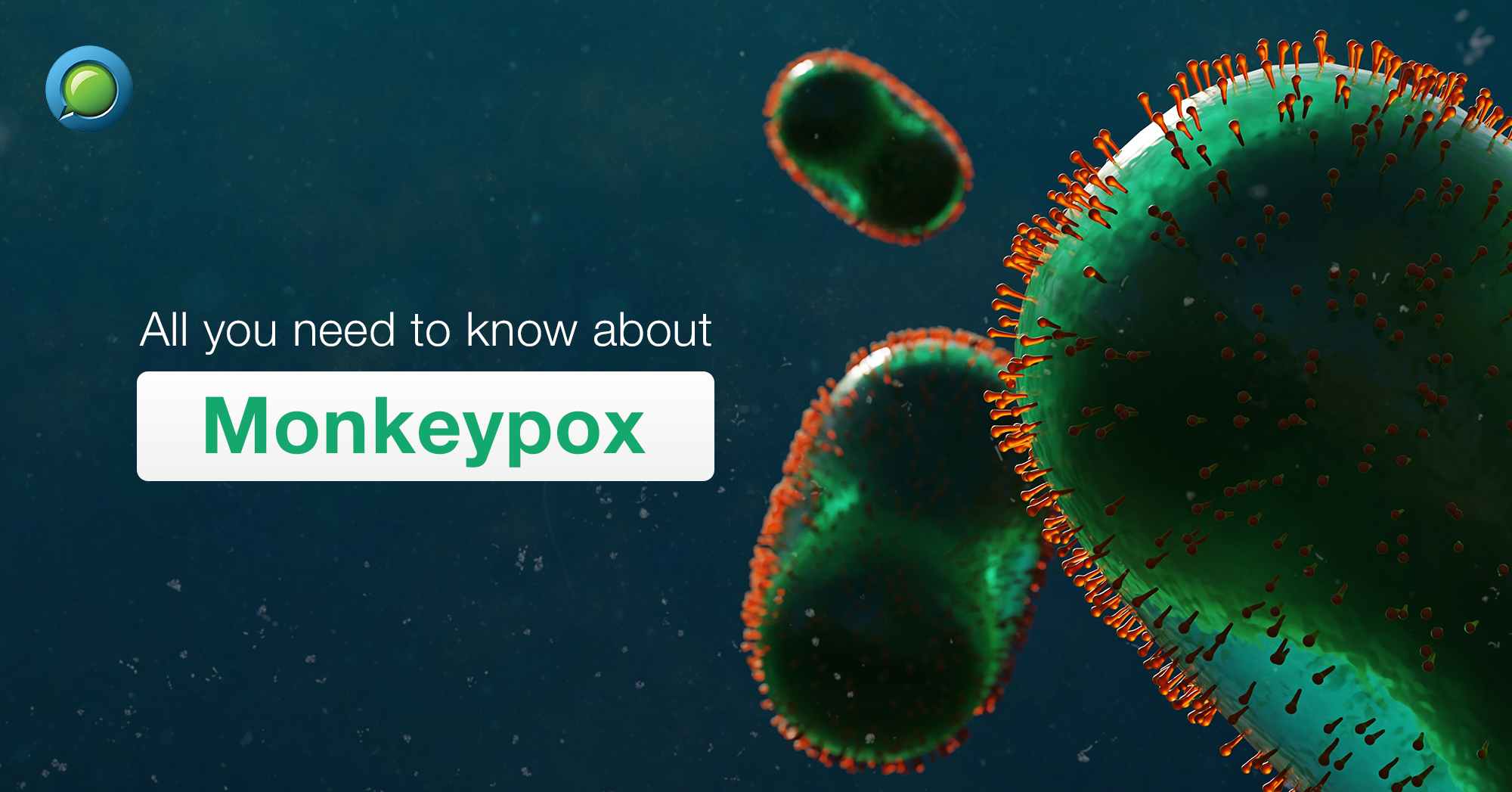Monkeypox is declared a “Public Health Emergency of International concern” by WHO in the backdrop of rapidly rising cases all over the world. More than 16,000 cases from over 70 countries have been reported that call for immediate measures to contain the spread of the virus, which include prevention, testing after exposure, and timely treatment. Let us find out the facts about Monkeypox in this article.
What is monkeypox?
Monkeypox is a viral disease caused by the “monkeypox virus” that causes flu-like symptoms and rash similar to smallpox [but monkeypox is milder and less contagious than smallpox]. The virus got its name after it was discovered in a group of monkeys kept for research in the year 1958. It can affect anyone but commonly affects children less than 15 years in Africa and has been reportedly seen in men who have had sex with infected men, outside Africa.
Types of Monkeypox virus
Table 1: 2 types of monkeypox virus based on the place of origin
Signs and Symptoms of Monkeypox
Flu-like symptoms followed by a typical rash may develop after days to a few weeks of exposure
- Fever
- Chills
- Headache
- Muscle aches /backache
- Extreme tiredness
- Swollen lymph nodes
Characteristic rash
- Appearance: Starts as red bumps, Looks like pimples or pus-filled blisters that are painful
- Site: May appear on the face, inside the mouth, and on other parts of the body[hands, feet, chest, genitals, or anus]
- Rash/Blisters crust over and fall off while going through different stages before complete healing
Duration of illness: About 2-4 weeks [Self-limiting disease]
The clinical presentation varies from person to person. The symptoms are usually similar to smallpox but milder, as they belong to the same virus family [orthopoxvirus]
Mode of Transmission
It can occur from
- An Infected animal [scratching/bitten by the animal/eating meat of infected animal]
- Person-to-person transmission through
- Direct contact with the infectious rash, scabs, or body fluids
- Respiratory secretions from an infected person
The person remains infectious from the time symptoms start until the rash has healed completely.
- A pregnant woman can spread the virus to her fetus through the placenta
- Using infected things (utensils, pillow)
Diagnosis
- Clinical evaluation & history of exposure
- Swab a lesion for the RT-PCR test for confirmation
- Blood tests for viruses/antibodies
Precautions to prevent Monkeyvirus infection
Follow simple measures to stay safe
- Wash hands with soap and warm water or use alcohol-based hand sanitizer.
- Stay away from infected people and things used by them
- Practice safe sex
- Avoid eating uncooked meat and stay away from living/dead infected animals
- Wear the mask and drink plenty of water
Vaccination is recommended for people who have been exposed or are at higher risk of exposure to monkeypox [healthcare workers]. As per CDC, the smallpox vaccine can prevent monkeypox infection since both viruses share genetic similarities. Currently, 2 vaccines are available to prevent monkeypox infection.
Treatment
Patient isolation, Reassurance, Symptomatic relief, rehydration therapy, protection of sores, nutritional support, and antibiotics for the prevention of secondary infection remain the mainstay of the treatment.
Affected individuals usually recover within 2 to 4 weeks. An antiviral agent has also been licensed for use in the treatment of Monkeypox.
Take precautionary measures to reduce the risk of getting/spreading an infection. Get vaccinated and if you show any concerning signs or symptoms, Don’t panic, Talk to a doctor at DocOnline for assistance.













